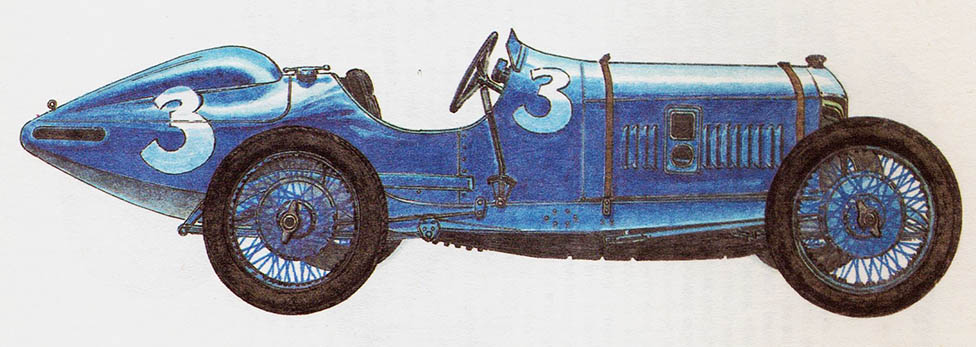PEUGEOT – year 1916
Peugeot Cars and Cycles SA, Audincourt, France.
During World War I, closed circuit races were the most popular in America, and especially the race for the Vanderbilt Cup organized from 1904 year, and competitions on artificial oval tracks, typu "Indianapolis”. In addition, many other races were held, np. „Astor Cup”, „300 mile race”, „100 mile race” e.t.c. Very liberal regulations allowed drivers driving one and the same vehicle to start at almost all such events. The real star among the competitors at that time was Dario Resta from Italy, which in years 1915-1916 he won almost all races driving a Peugeot car. W 1915 in the year he won five times (GP USA, Vanderbilt Cup w Santa Monica i Chicago, 300 mil w Cincinnatti, 100 mil w Sheepshead Bay) and once he finished second (500 Indianapolis mile). The winning Peugeot car also contributed to these successes, which the following year, run by various riders, he won all the races mentioned again. In the US Grand Prix competition in 1916 Peugeot, driven by the American Howard Wilcox, won the year.

Peugeot Cars and Cycles SA, Audincourt, France.
The winning car was actually a z model 1914 year. The engine capacity was only 4400 cm3 (cylinder diameter 92 mm, piston stroke 169 mm), because the regulations for this year limited the displacement to 4916 cm3. The water-cooled four-cylinder engine was delivering power 82,4 kW (112 KM) by 2800 RPM. The spherical combustion chamber of each cylinder had two intake valves controlled by two camshafts in the cylinder head. The steel frame had rigid bridges suspended on semi-elliptical leaf springs. Peugeot had drum brakes of equal dimensions at the front and rear on all four Rudge-Whitworth wheels. It was reaching maximum speed 180 km/h. Developing this speed was possible thanks to the aerodynamic body with a sharpened rear section, under which a fairly large fuel tank and two spare wheels were hidden. The mechanic's seat was slightly shifted back compared to the driver's seat. Howard Wilcox was victorious in driving this Peugeot model in the first post-war race 500 miles Indianapolis w 1919 year.